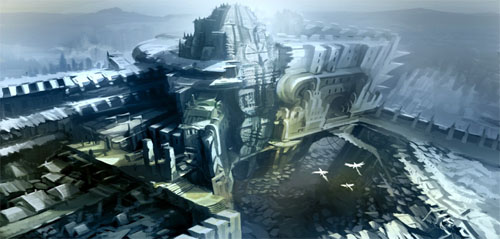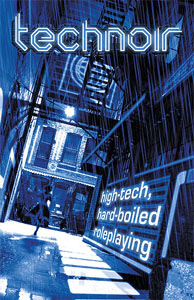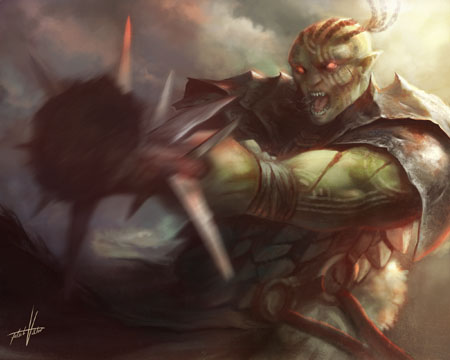IN THE SHADOW OF THE SPIRE
Session 2A: Welcome to Ptolus
In which the darker side of Ptolus proves to be an addicting experience and the services of many are divided across shopping trips both past and present…
At the beginning of the campaign journal for this session, Tee shares the revelations she gleaned from reading through the Delver’s Guild membership papers. This is actually something that was resolved between sessions. In fact, I’ve still got the original e-mail from Tee’s player:
One thing that should probably be added to the journal is the matter of the ID papers. Everyone took their set that says they are members of Ptolus (I’d imagine that Tee would either keep Agnarr’s for him, or explain to him what it means so he can hold it himself) and the rest of the papers were placed in the secret compartment of Tee’s trunk, and the trunk was then locked (Tee now carrying the key with her instead of leaving it in her room).
I’m not sure what happened with the Delver’s Guild papers officially, though I would imagine that they were distributed and not locked up with the ID papers, as presumably they are not falsified. On a side note – Tee would have read through her set of Delver’s papers (you said there was a packet of information) and probably gone through the ID papers that night, to see all of the things we were “members” of, to try to keep a mental list in case they were needed later, and to see if we were all members of the same things.
I’ve found it can often be quite useful to end a session at the point just before the players are going to engage in a lot of “down time” activities. These activities can then be resolved at length, in detail, and at leisure through e-mail or other means. This conserves table time, allows for more detailed explorations of certain aspects of the campaign, and can also keep the players engaged in the campaign between sessions.
This particular e-mail from the player was prompted by an e-mail in which I sent out the campaign journal for session 1 and asked all of the players to, “Please take a look through it and let me know if you feel anything was misrepresented
or anything important left out.”
This is another aspect of keeping a detailed campaign journal: The process of review not only helps to keep the record accurate, it also helps to reinforce the players’ memories of the session for future reference.
Unfortunately, it’s not always easy to convince the players to actually read the campaign journal. So I’ve taken to secretly docking their XP by 50% whenever they don’t do it.
(No, not really. That’s just my way of seeing whether or not any of them are reading these essays. I’ve found that if players don’t want to engage in a campaign, you can’t force them to do so through punishments. You need to keep adding carrots and trying different techniques to see what will stick. And what sticks will often change over time.)

















